Jose Miranda
Don't Think It Twice: Exploit Shift Invariance for Efficient Online Streaming Inference of CNNs
Aug 06, 2024
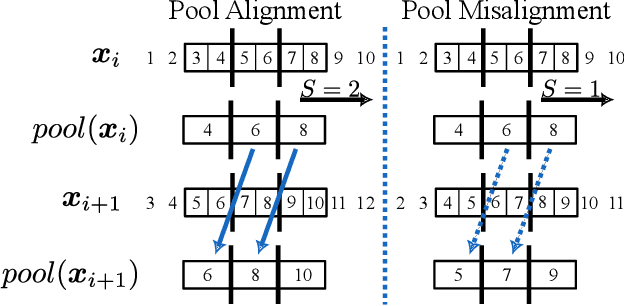
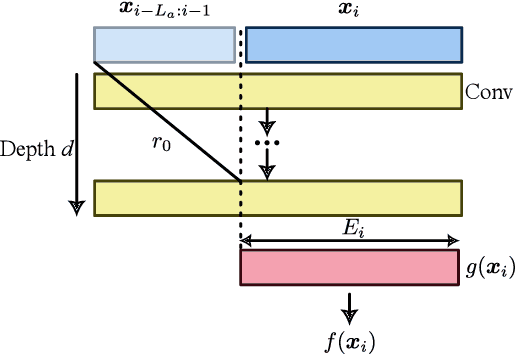
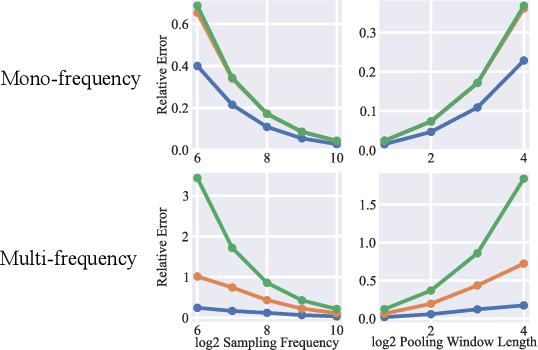
Abstract:Deep learning time-series processing often relies on convolutional neural networks with overlapping windows. This overlap allows the network to produce an output faster than the window length. However, it introduces additional computations. This work explores the potential to optimize computational efficiency during inference by exploiting convolution's shift-invariance properties to skip the calculation of layer activations between successive overlapping windows. Although convolutions are shift-invariant, zero-padding and pooling operations, widely used in such networks, are not efficient and complicate efficient streaming inference. We introduce StreamiNNC, a strategy to deploy Convolutional Neural Networks for online streaming inference. We explore the adverse effects of zero padding and pooling on the accuracy of streaming inference, deriving theoretical error upper bounds for pooling during streaming. We address these limitations by proposing signal padding and pooling alignment and provide guidelines for designing and deploying models for StreamiNNC. We validate our method in simulated data and on three real-world biomedical signal processing applications. StreamiNNC achieves a low deviation between streaming output and normal inference for all three networks (2.03 - 3.55% NRMSE). This work demonstrates that it is possible to linearly speed up the inference of streaming CNNs processing overlapping windows, negating the additional computation typically incurred by overlapping windows.
DC is all you need: describing ReLU from a signal processing standpoint
Jul 23, 2024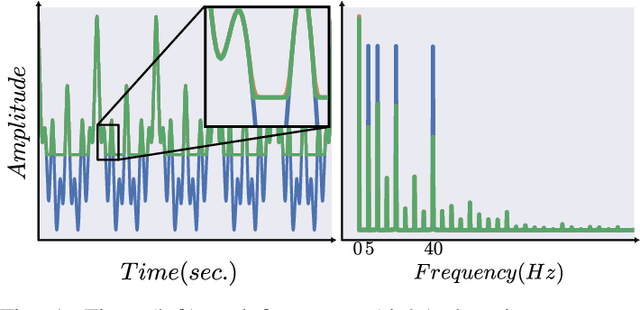
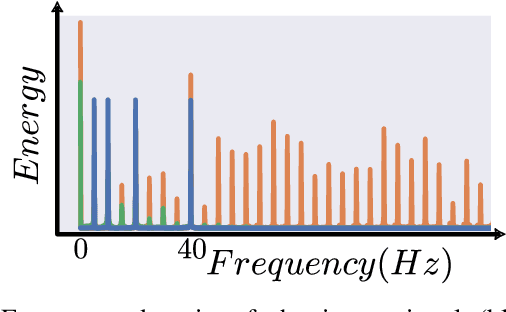
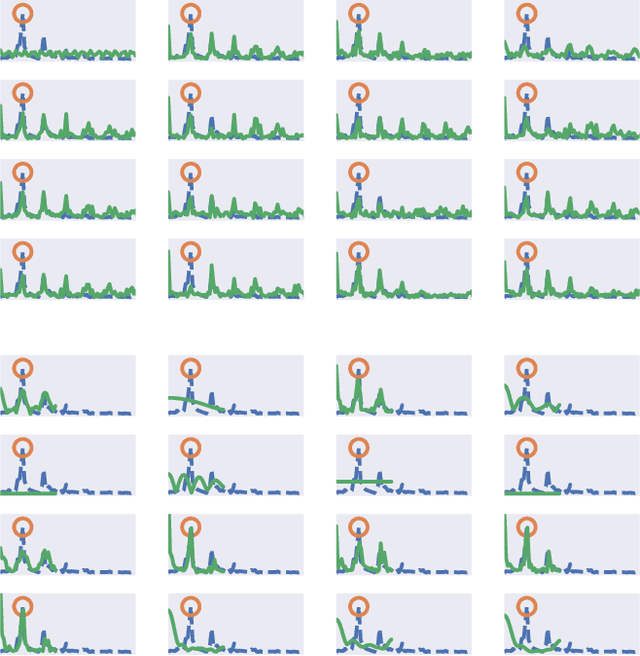

Abstract:Non-linear activation functions are crucial in Convolutional Neural Networks. However, until now they have not been well described in the frequency domain. In this work, we study the spectral behavior of ReLU, a popular activation function. We use the ReLU's Taylor expansion to derive its frequency domain behavior. We demonstrate that ReLU introduces higher frequency oscillations in the signal and a constant DC component. Furthermore, we investigate the importance of this DC component, where we demonstrate that it helps the model extract meaningful features related to the input frequency content. We accompany our theoretical derivations with experiments and real-world examples. First, we numerically validate our frequency response model. Then we observe ReLU's spectral behavior on two example models and a real-world one. Finally, we experimentally investigate the role of the DC component introduced by ReLU in the CNN's representations. Our results indicate that the DC helps to converge to a weight configuration that is close to the initial random weights.
KID-PPG: Knowledge Informed Deep Learning for Extracting Heart Rate from a Smartwatch
May 02, 2024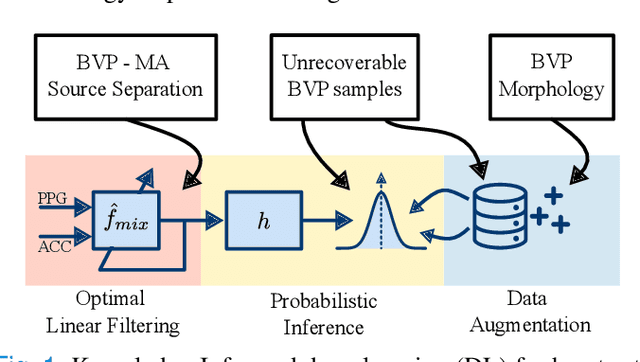
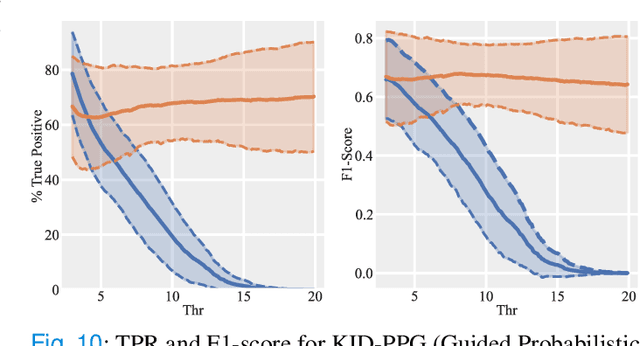
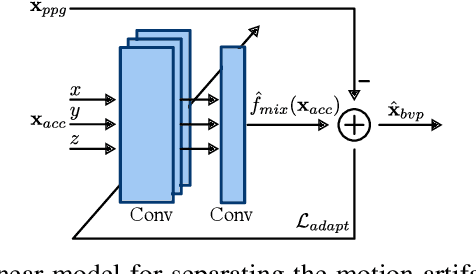
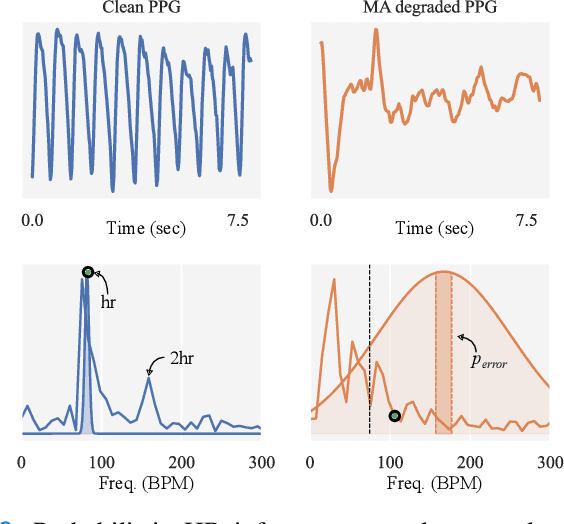
Abstract:Accurate extraction of heart rate from photoplethysmography (PPG) signals remains challenging due to motion artifacts and signal degradation. Although deep learning methods trained as a data-driven inference problem offer promising solutions, they often underutilize existing knowledge from the medical and signal processing community. In this paper, we address three shortcomings of deep learning models: motion artifact removal, degradation assessment, and physiologically plausible analysis of the PPG signal. We propose KID-PPG, a knowledge-informed deep learning model that integrates expert knowledge through adaptive linear filtering, deep probabilistic inference, and data augmentation. We evaluate KID-PPG on the PPGDalia dataset, achieving an average mean absolute error of 2.85 beats per minute, surpassing existing reproducible methods. Our results demonstrate a significant performance improvement in heart rate tracking through the incorporation of prior knowledge into deep learning models. This approach shows promise in enhancing various biomedical applications by incorporating existing expert knowledge in deep learning models.
 Add to Chrome
Add to Chrome Add to Firefox
Add to Firefox Add to Edge
Add to Edge